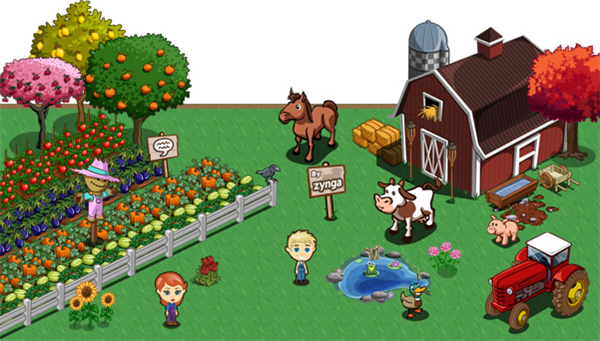Jim Veevaert’s career has included time as an executive producer at Vivendi and Microsoft, president at Jerry Bruckheimer Games and most recently general manager at Zynga’s social game division. Having been a developer for nearly 20 years, he’s in a unique position to observe the game development differences between console and mobile/social games.
“In my console history, we spent so much time working on graphics and on the 720p resolution, making sure we had proper tiling. The framerate had to be perfect,” said Veevaert. “Well, what’s interesting is you have a certain amount of people who just have software renderers. So we have to make the game fun for people who’ve got a 4-year-old computer and still want to play. They won’t have any hardware-accelerated effects, but for people who have great laptops and great computers, why not leverage all that technology In console, you had a unified platform. You knew exactly what you were developing to. Here we have to scale high and low. It’s like back in the PC days, when you had to support everybody. Windows 95 and 98, remember that ”
One major difference between social development and console development, notes Veevaert, is the data Zynga gets back from players.
“After we change one feature, we can see the adoption rate go up or go down – or the way people are sending gifts to each other, and how they’re responding from a social perspective,” said Veevaert. “By getting the realtime information, all that’s done is solidified our relationship with the audience. There was a real distance between us, the way it worked in the console world.”
“We would do updates and look at Bungie.net to get information, and think, ‘Oh, that’s interesting.’ But it’s only the core of the core that are posting on Bungie.net and telling you what’s going on,” he added. “Of the 12 million people who bought the game, I had no idea what the vast majority were doing. Now, I love this process. It’s great, and it’s fast. We can get to a prototype really quickly. We can get to benchmark tests quickly as well.”

“There doesn’t seem to be a limitation to what we can actually do in the space of Facebook, and now it’s happening on mobile. Technology is improving so fast, and we’re racing with it. You just read about Flash 11.4, right Suddenly now you can have console games being played right in the Facebook window. That’s incredible,” he said. “That’s what’s so fulfilling about this industry right now: the sense of being able to be creative, responsive, and move fast – really moving fast and finding satisfaction in what we’re creating today and what we’re going to get done in one, two, or three weeks. It’s having the team feeling a sense of momentum and connectedness. I just love it.”
Veevaert contrasted the fast turnaround for mobile/social development to the long development times for console titles.
“Maybe that’s going to take me another two-and-a-half or three years to build I don’t know what the year’s going to be like in three years. Or, as has happened to me in the past, you start developing a game, and then they say, ‘Yeah, that would look good on Xbox 1, but we really need you to make this for the 360. Can you please emulate the 360 and start working on it ‘” Veevaert began. “And, guaranteed, if you’re going to develop a game that takes two or three years, you run the risk that that’s exactly what’s going to happen.”
For Veevaert, he’s happy to be where he’s at. “There’s a great deal of satisfaction in thinking about, ‘What do we get from that first two to three to four minutes of gameplay ‘ We never thought that way in the console world,” Veevaert said. “We’d be saying, by level three, here’s where the player is going to be. We assumed you’d get here, move a bit forward, shoot, keep going, and you’d just get to level three.”
“We spend a great deal of time even thinking about how we introduce the gameplay mechanics to you. There’s a great deal of satisfaction in watching the adoption and what we call the falloff rate. How fast do people fall off when they’re playing with the first-time user experience How fast do they fall off, and how often do they stay engaged A game designer likes to design game mechanics. When they get great feedback, and when they get validation and their decisions are working, that’s fun. So I’m finding the same level of fun and satisfaction in a game like Ruby Blast as I would in bringing a game like Halo 3 and working on it level by level. It’s like a minuet versus a symphony. Both are complex. Both have a lot to offer. Both have a lot of richness and depth, and both have something for a different audience,” Veevaert noted.
Source: VentureBeat

